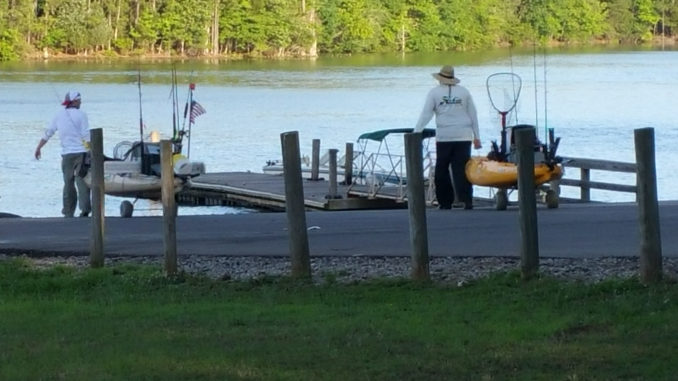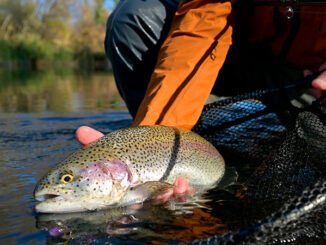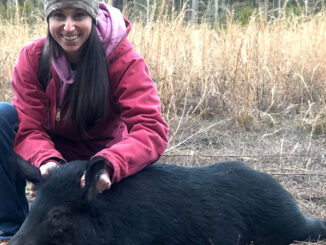
City lakes and ponds offer kayakers plenty of opportunities
If you are a member of one of the burgeoning kayak fishing clubs in the Carolinas, chances are pretty good that you’ve fished in a local, municipal lake.
Muni lakes and kayaks go hand-in-hand as the water districts or other entities that own the lakes love to promote the green way of life, especially if the water is being used for public consumption. The other beautiful thing about muni lakes is that if power boats are allowed on the water, it’s typically with a horsepower restriction in the neighborhood of 10 HP or less. This means paddlers don’t have to fear being flattened like a squirrel in the middle of a busy interstate by a glitter rocket or cabin cruiser when crossing the main body of the lake.
Another beautiful thing about muni lakes is that all of them have pretty decent fishing for a number of species. Some lakes may even further restrict creel limits beyond what is allowed by the N.C. Wildlife Resources Commission or the S.C. Department of Natural Resources. That’s a win-win for catch-and-release anglers.
Muni lakes may range in size from a couple hundred to a couple thousand acres, but most lakes in the Carolinas settle between the 400- to 900-acre range. This means a lot of water moves through the lake and also means these lakes tend to be immune from fall turnover or de-stratification that frequently plagues larger impoundments this time of year.
Municipal lakes often have very interesting topography that ranges from a main-lake basin dug with heavy machinery to help impound the lake to old farm ponds and other unique structures beneath their surfaces. In today’s cartographic world, the municipality may have gone as far as creating a topographic map that is available through the owning entity, especially if they permit docks to be built by residents, as the maps are used in the dock-approval process.
Learning to fish muni lakes is no different than learning to fish a larger impoundment, except the fish’s home range is smaller. Fish typically do not seasonally move as far as they would in a larger impoundment, and the primary forage fish is most likely threadfin shad, which helps keep fish in closer proximity.
Muni lakes may or may not have well-defined creek and river channels, especially if development is permitted on the lakeshore. Muni lakes tend to get a lot of bank beating during the spring by resident anglers, which opens the doorway for a paddling angler with up-to-date sonar skills to have as much or more advantage on finding, and catching fish, as any of the local residents who fish the lake two to three days a week.
The final perk is launch areas. A muni lake is more likely to have a kayak-only launch facility than any other body of water. This again goes back to the green movement and the fact that it’s much cheaper to dump a few tons of sand or crushed run on a gently sloping bank than it is to concrete a roundabout with partitioned back-down lanes and build a courtesy dock.
Muni lake monster:
Big fish live in small ponds? That’s never more true than when it’s applied to a municipal lake. These lakes don’t receive the same fishing pressure as big impoundments, and while some may receive as much pressure per acre but generally with less intensity, meaning kayaking anglers with appropriate sonar and fishing skills are capable of catching some truly sizable fish, especially bass.
My personal best bass came from a municipal lake while kayak-fishing with a buddy more than 10 years ago. We were pretending it was the 1980s by fishing with bubble-gum floating worms. Just big, pink worms and an offset hook.
Although he’d never been on this lake before we fished, my buddy pointed out an area where he thought he’d seen a huge bass guarding a nest. He told me to cast at her as he was re-tying after catching a decent largemouth bass.
You always imagine that a 10-pound bass would hit much differently than say a 2-, 3- or even a 5-pound bass. This one didn’t. As the worm was fading into the depths, I felt the usual thump, and then the line moved off to the side.
Never one to be stingy on the hookset, I gave the fish as big a pro-angler hookset as I could muster without turning the kayak over, and the fish simply exploded. Two aerial leaps and four hard runs on 12-pound test and medium-action spinning gear is enough to cause heart failure.
Having tired out, the fish rolled up next to the boat, and I lipped it and brought it aboard. This was before measuring boards and identifiers or even carry hand-held scales were common. I tossed my buddy my digital camera, and he snapped two photos before I released the fish.
We both agreed the fish would go in the high 9s but probably lacked an ounce or two of being a true 10-pounder. That’s okay; after all, it was just a bass.
November’s best fishing bets
North Carolina
What — Largemouth bass, crappie, hybrid bass
Where — Greensboro city lakes: Lake Higgins, Lake Brandt, Lake Townsend
How — In fall, bass will invade the shallows, chasing baitfish. Spinnerbaits, crankbaits and Flukes will work. Cast as shallow as you can and retrieve parallel to the bank.
Launch — Each lake has its own launch area available at a charge of $6 per day, or purchase an annual kayak-launch pass for $60.
Insider tip — There’s no better way to match the hatch than catching bait directly from the lake you’re fishing. Greensboro City Lakes allow you to use cast nets for catching bait only, so bring your net and a bait container.
South Carolina
What — Bass, bream, catfish
Where — Lake H.B. Robinson, Hartsville, S.C.
How — For bass, try flipping a black/blue jig and craw combo around any of the boat docks that have deeper water off the front. Crappie can be caught fishing jigs or live bait around submerged timber. There are fish attractors in the lake.
Launch — Progress Energy maintains a public boat ramp and pier at the north end of the lake. Boaters can gain access to this ramp via Lake Robinson Drive, aka State Road S-13-346. This road crosses the lake between Middendorf Rd. and W. Bobo Highway.
Insider tip — There is a fish consumption advisory on Lake Robinson for mudfish (don’t eat), bluegill, warmouth and chain pickerel (one meal per week) and largemouth bass (one meal per month).





Be the first to comment